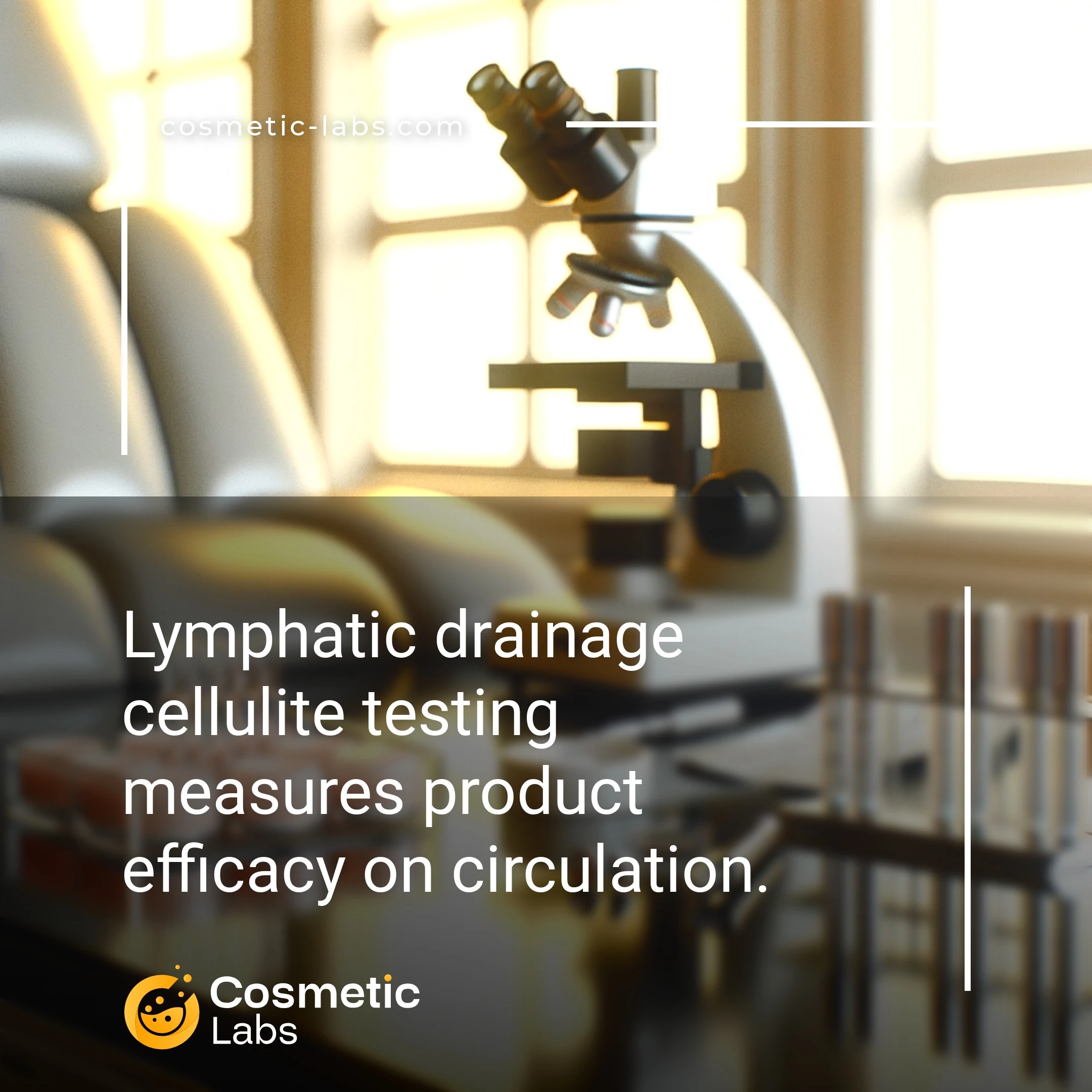Lymphatic Drainage Cellulite Testing Services for Brands

What is Lymphatic drainage?
Lymphatic drainage cellulite testing services evaluate how cosmetic formulations improve lymphatic circulation and reduce cellulite appearance through specialized in-vitro and ex-vivo protocols. Labs measure microcirculation enhancement, fluid retention reduction, and skin texture improvements using standardized imaging techniques and biomarker analysis. These preclinical studies provide the efficacy data brands need to support anti-cellulite claims before market launch, with testing typically completed within 4-6 weeks.
Why do you need this service?
Cosmetic labs on our platform use lymphatic drainage cellulite testing protocols to validate anti-cellulite formulations through microcirculation measurements and tissue imaging before product launch. Beauty brands partner with these facilities to demonstrate measurable skin smoothing results in clinical studies, providing the scientific backing needed for marketing claims and regulatory submissions across global markets.
Who provides Lymphatic drainage services?
All cosmetic labs providing Lymphatic drainage services
There is no company providing these services at the moment.
Lymphatic Drainage Testing for Cellulite Reduction Products
Lymphatic drainage testing evaluates how effectively your cellulite treatments improve lymphatic circulation and reduce fluid retention. These specialized assessments complement traditional cellulite efficacy studies by measuring microcirculation improvements and tissue drainage capabilities.
Microcirculation Assessment Methods
Labs use lymphatic drainage testing to measure blood flow velocity and capillary density changes after product application. Doppler ultrasound and laser speckle contrast imaging track circulation improvements in real-time. These methods detect even subtle changes in tissue perfusion that indicate better lymphatic function.
Testing protocols typically include:
- Baseline microcirculation mapping
- Post-treatment flow velocity measurements
- Capillary density analysis
- Tissue oxygenation monitoring
Fluid Retention and Tissue Drainage Analysis
Bioimpedance spectroscopy measures tissue fluid retention and drainage efficiency before and after treatment application. This technique quantifies extracellular fluid changes and tissue conductivity variations. Labs also use ultrasound imaging to assess subcutaneous tissue thickness and density modifications.
Key measurements include:
- Extracellular water content
- Tissue impedance values
- Subcutaneous layer thickness
- Interstitial fluid distribution
Contact labs on our platform to discuss lymphatic drainage testing protocols that validate your cellulite product’s circulation-boosting claims with quantifiable data.
Applications of Lymphatic Drainage Cellulite Testing Services
Cosmetic labs use lymphatic drainage cellulite testing services to validate product claims and optimize formulations for anti-cellulite treatments that target fluid retention and circulation.
Pre-Launch Product Validation
Beauty brands submit anti-cellulite creams, serums, and massage oils for lymphatic drainage assessment before market release. Labs measure microcirculation improvements, fluid retention reduction, and tissue firmness changes over 28-56 day testing periods.
Testing protocols include ultrasound imaging to track subcutaneous fat layer thickness, bioimpedance analysis for fluid distribution mapping, and thermography to assess circulation patterns. Results support marketing claims like “reduces fluid retention by 23%” or “improves lymphatic flow within 4 weeks.”
Formulation Optimization Studies
Product developers use lymphatic drainage testing to compare ingredient concentrations and delivery systems. Labs test caffeine percentages, botanical extract ratios, and penetration enhancers to determine optimal formulations for lymphatic stimulation.
Comparative studies evaluate massage techniques, application frequencies, and product combinations. Testing data helps brands refine textures, adjust active ingredient levels, and develop evidence-based application protocols for maximum lymphatic drainage benefits.
| Testing Parameter | Measurement Method | Typical Timeline | Key Outcome |
|---|---|---|---|
| Lymphatic Flow Rate | Fluorescence Microlymphography | 4-8 weeks | Circulation improvement % |
| Fluid Retention | Bioimpedance Analysis | 2-6 weeks | Tissue water content reduction |
| Skin Firmness | Cutometer Measurements | 4-12 weeks | Elasticity and tone scores |
| Microcirculation | Laser Doppler Flowmetry | 1-4 weeks | Blood flow velocity changes |
Ready to validate your anti-cellulite formulation’s lymphatic drainage benefits? Connect with experienced cosmetic testing labs on our platform to design your study protocol and generate compelling efficacy data.
